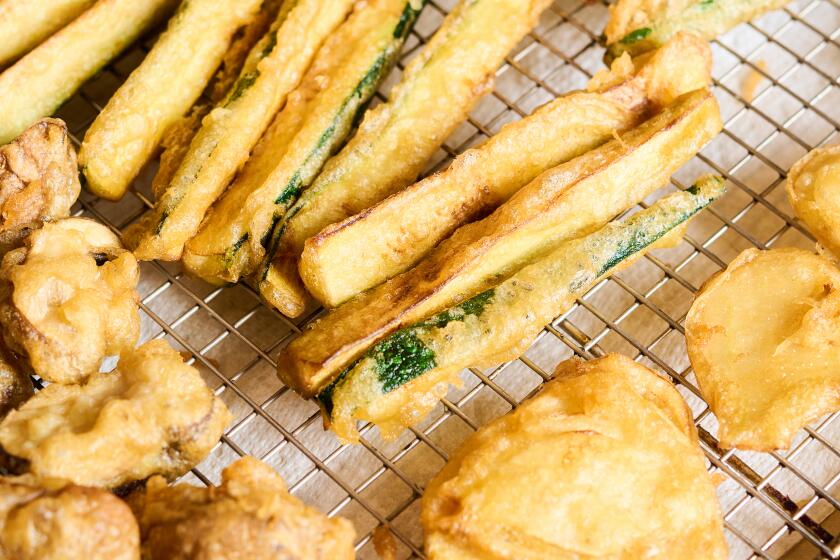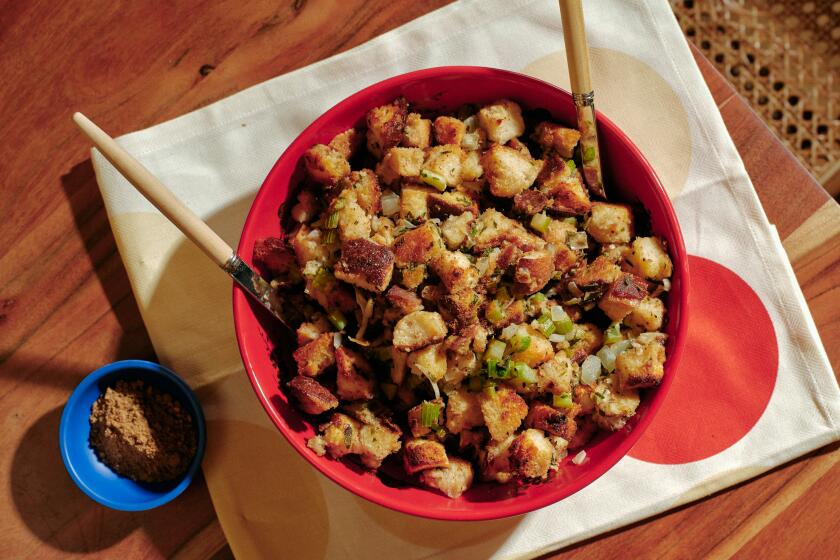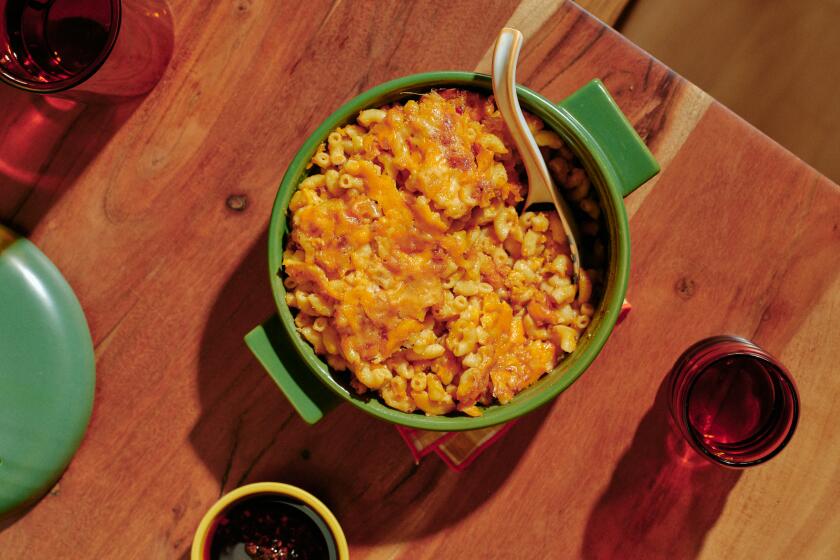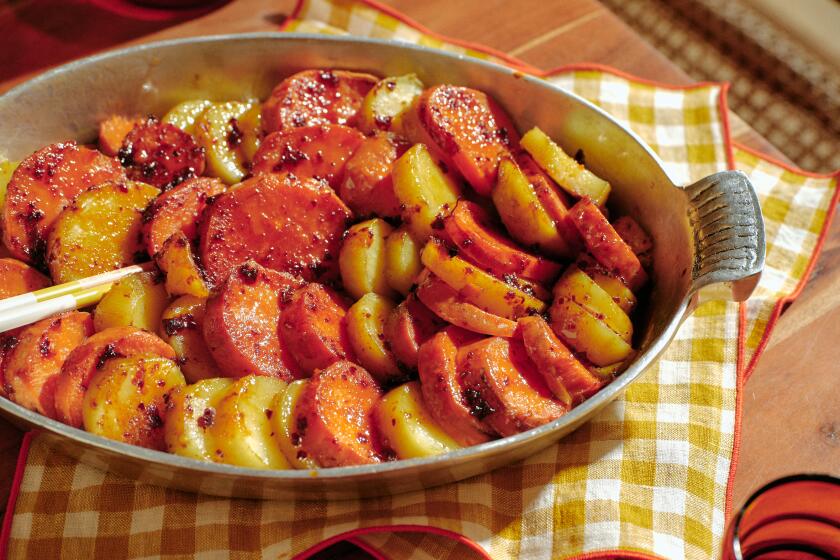Sprouted Wheat And Lentil Pilaf

Every week at the farmers market I walked by the sprout vendors’ tables. Their sprouts looked like collections of multicolored beads all sorted neatly into a patchwork of square boxes--pale orange lentils, golden garbanzos, brown kernels of wheat and dark green pumpkin seeds, ready for a crafts class to make them into mosaics. On the other side of the table were the brilliant green shoots of peas, radishes and sunflowers.
My closer acquaintance with sprouts was limited to the tangle of alfalfa sprouts familiar to anyone who ate a sandwich in the 1970s and mung bean sprouts in egg foo yung. I knew that sprouts were seeds or beans caught in the act of germinating, and they were good for you. That was about it.
One day I stopped at the sprout table and bought great-looking mesclun and a sprout mix to toss into it. By lunchtime I was converted.
A green salad tossed with a few sprouts is immediately more interesting in flavor and texture. I liked the radish sprouts, so innocent-looking but fiery in the mouth, and the sweet pea sprouts, because they tasted just like sweet peas. But the real deal, for me, was the mix of legumes: peas, multicolored lentils, mung beans and black beans, all mixed up. I steamed them lightly and tossed them with a bowlful of mixed Asian greens and slivered snap peas in a dressing of olive oil, sesame oil, soy sauce and rice vinegar. Wonderful.
I decided to make some hummus. I love it, but don’t make it often because it requires all those hours of boiling beans. But with sprouted beans, cooking time is cut to minutes. (The sprout man thinks I’m crazy to cook them at all, but-- de gustibus .)
I simmered my sprouted garbanzos in salted water for a short while, then threw them in the Cuisinart with lemon juice, tahineh , a little garlic and a pinch of spicy pimiento. Minutes later I was eating delicious hummus with my toasted pita bread.
The next time I looked at a colander full of plump sprouted garbanzos, I decided to skip the food processor. I bathed them in olive oil and plenty of lemon juice, added a drop of dark sesame oil, some minced garlic and a handful of chopped cilantro and parsley and left them to marinate in the refrigerator. For lunch, I topped a plate of greens with a very tasty garbanzo bean salad.
I could add chopped red peppers to these, I thought. Or sweet onion, steamed potato, sliced celery or olives. But I didn’t; I ate them just as they were--delicate, nutty and almost sweet inside, tangy outside and with that tender but firm texture that sprouted beans maintain. I’ll be working my way through the variations this summer, when cool salads waiting in the fridge are like money in the bank.
My greatest success with cooked sprouts was a pilaf made of sprouted wheat berries and lentils. The wheat berries looked so enticing, with their thread-like tails. I steamed them, and they were pleasantly chewy and perfectly tender in about 20 minutes. I added pink and green lentils, steamed a few minutes more, then stirred in caramelized onions to make a richly satisfying pilaf. The wheat berries were sweet, plump and slightly crunchy, the lentils earthy, and the onions made it perfect.
I served the pilaf hot with roasted vegetables. I mixed in sauteed shiitake mushrooms, and it was even better. Then it had another life as a cold pilaf, mixed with red grapes and slivered almonds and scattered over a green salad. I spooned leftovers into pita bread with hummus and shredded lettuce for a great sandwich. I love those multitalented foods that can do drama or comedy, and sing and dance. What a dish!
Combine the wheat berries in a saucepan with about 2 cups of water and half a teaspoon of salt. Bring the water to a boil, lower the heat, cover the pan and simmer the wheat for about 15 minutes. Stir in the sprouted lentils, cover the pan again, and simmer until the lentils are tender but not mushy, about 10 more minutes. Strain the wheat berries and lentils and set them aside.
Meanwhile, heat the oil in a large nonstick pan, add the chopped onions and a good dash of salt, and cook the onions over low heat, stirring often, until they’re soft and caramel-colored. This must be done slowly--it might take about 45 minutes--but the onion will develop a seductively rich flavor, both sweet and savory.
When the onion is golden brown, stir in the steamed wheat and lentils, and cook everything together for just a few minutes, tossing gently. Taste it, and correct the salt if needed. The pilaf can be served hot, with roasted or steamed vegetables. Or, allow it to cool and mix it with your favorite things to make terrific salads.
Get our Cooking newsletter.
Your roundup of inspiring recipes and kitchen tricks.
You may occasionally receive promotional content from the Los Angeles Times.














